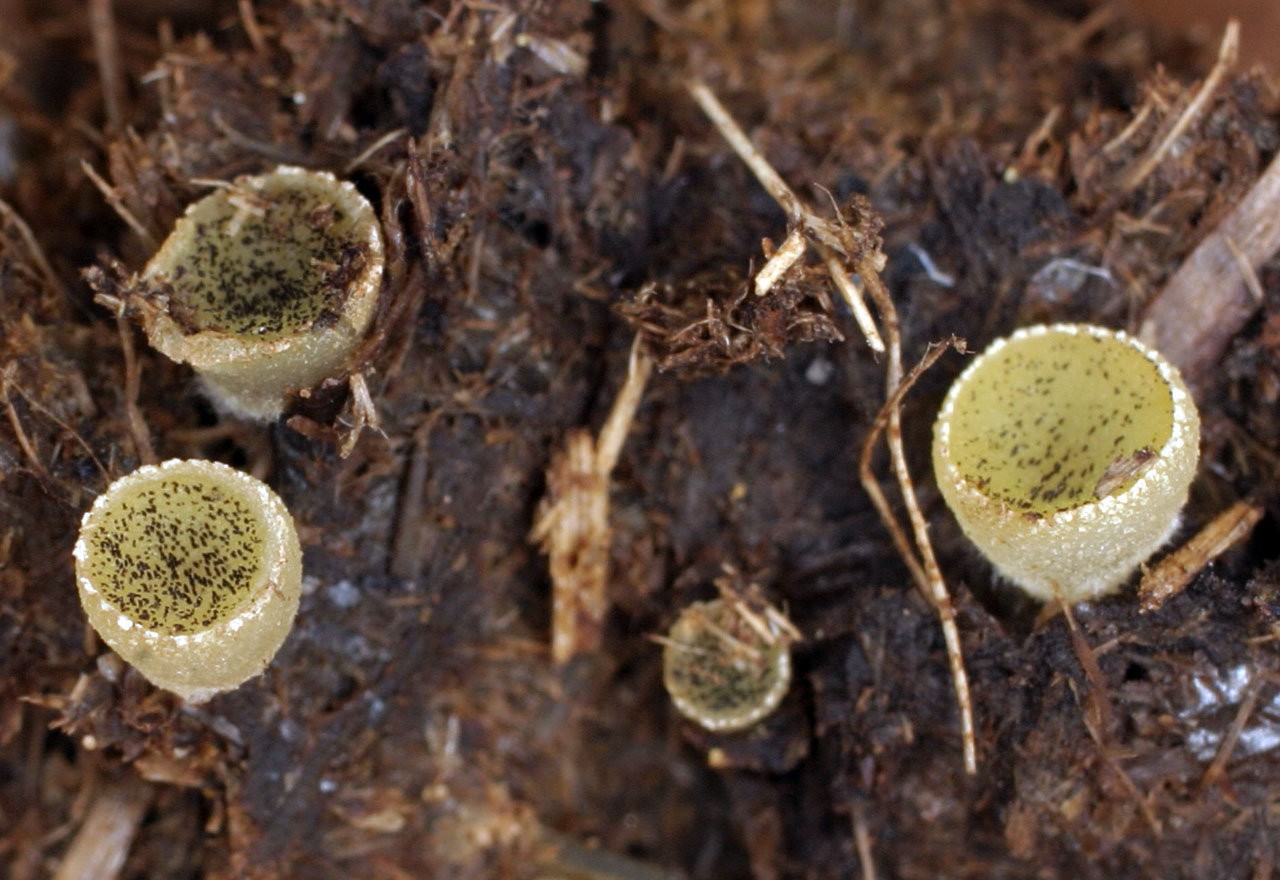Turinys
Ascobolus dung (Ascobolus stercorarius)
- Skyrius: Ascomycota (Ascomycetes)
- Poskyris: Pezizomycotina (Pezizomycotins)
- Klasė: Pezizomycetes (Pezizomycetes)
- Poklasis: Pezizomycetidae (Pezizomycetes)
- Užsakymas: Pezizales (Pezizales)
- Family: Ascobolaceae (Ascobolaceae)
- Genus: Ascobolus (Ascobolus)
- Tipas: Ascobolus furfuraceus (Ascobolus dung)
- Ascobolus furfuraceus

Dabartinis pavadinimas yra (pagal Species Fungorum).
Ascobolus dung (Ascobolus stercorarius) is a fungus from the Ascobolus family, belongs to the genus Ascobolus.
Išorinis aprašymas
Ascobolus dung (Ascobolus stercorarius) belongs to the European varieties of mushrooms. Young fruiting bodies are yellowish in color and disc-shaped in shape. As the mushroom matures, the surface becomes dark. The cap diameter is 2-8 mm. Later, the caps of Ascobolus dung mushrooms (Ascobolus stercorarius) become cup-shaped and concave. The mushroom itself is sessile, with some specimens ranging in color from greenish yellow to greenish brown. With age, brown or purple stripes appear on their inner part, in the region of the hymenophore.
The spore powder is purplish-brown, composed of spores that fall from mature specimens onto grass and are often eaten by herbivores. Mushroom pulp of an ocher shade, similar to the color of wax.
The shape of fungal spores is cylindrical-club-shaped, and they themselves are smooth, have several longitudinal lines on their surface. Spore sizes – 10-18 * 22-45 microns.

Grebų sezonas ir buveinė
Ascobolus dung (Ascobolus stercorarius) grows well on the manure of herbivorous animals (especially cows). Fruiting bodies of this species do not grow together with each other, but grow in large groups.
Valgomumas
Not suitable for eating due to its small size.
Panašūs tipai ir skirtumai nuo jų
There are several species of mushrooms similar to the ascobolus dung (Ascobolus stercorarius).
Ascobolus carbonarius P. Karst – darker, orange or greenish in color
Ascobolus lignatilis Alb. & Schwein – differs in that it grows on trees, grows well on bird droppings.









